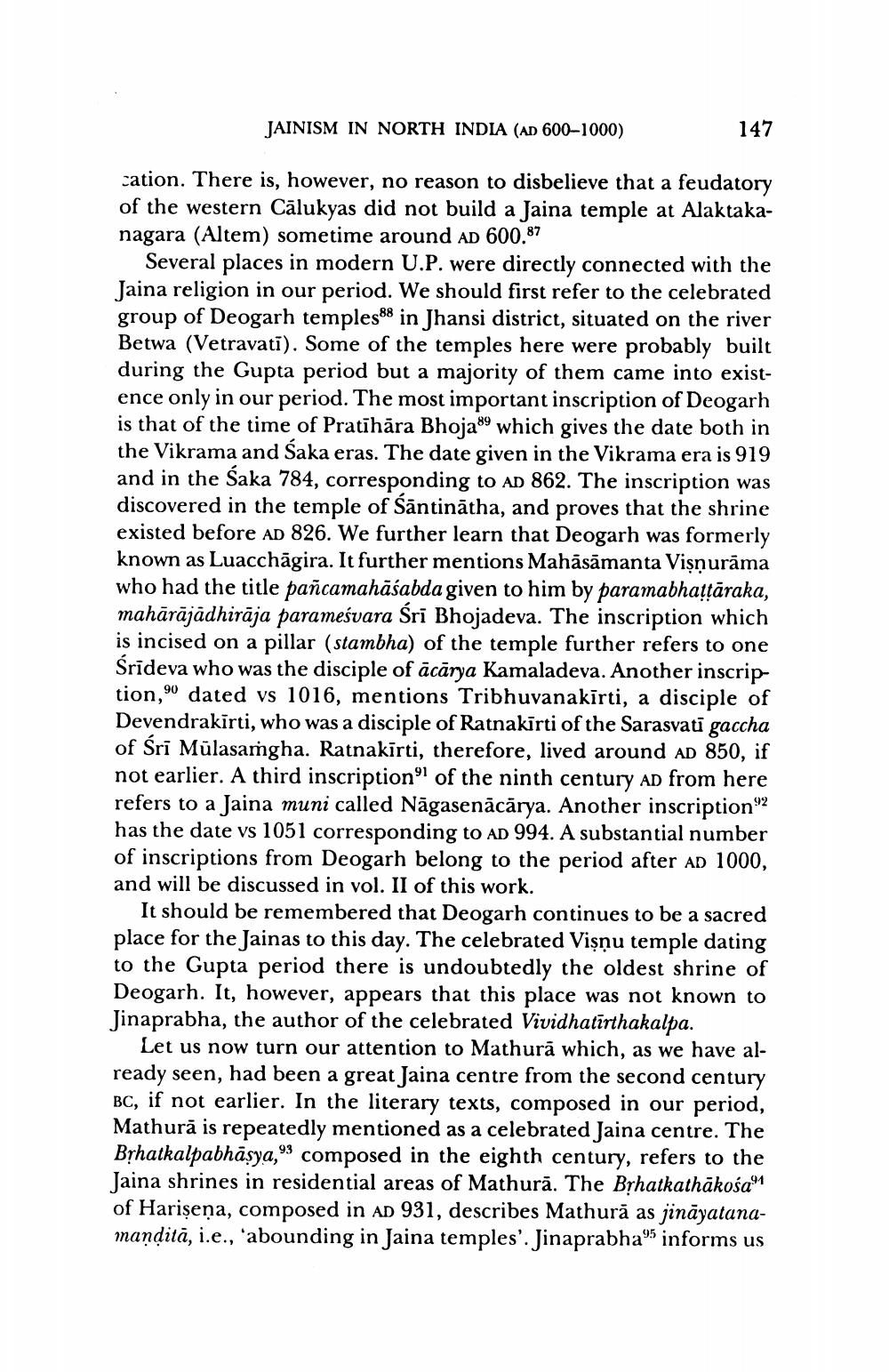________________
JAINISM IN NORTH INDIA (AD 600-1000)
147
cation. There is, however, no reason to disbelieve that a feudatory of the western Cālukyas did not build a Jaina temple at Alaktakanagara (Altem) sometime around ap 600.87
Several places in modern U.P. were directly connected with the Jaina religion in our period. We should first refer to the celebrated group of Deogarh temples88 in Jhansi district, situated on the river Betwa (Vetravati). Some of the temples here were probably built during the Gupta period but a majority of them came into existence only in our period. The most important inscription of Deogarh is that of the time of Pratīhāra Bhoja89 which gives the date both in the Vikrama and Saka eras. The date given in the Vikrama era is 919 and in the Saka 784, corresponding to AD 862. The inscription was discovered in the temple of Sāntinātha, and proves that the shrine existed before ad 826. We further learn that Deogarh was formerly known as Luacchāgira. It further mentions Mahāsāmanta Vişnurāma who had the title pañcamahāśabda given to him by paramabhattāraka, mahārājādhiraja parameśvara Sri Bhojadeva. The inscription which is incised on a pillar (stambha) of the temple further refers to one Srideva who was the disciple of ācārya Kamaladeva. Another inscription,90 dated vs 1016, mentions Tribhuvanakirti, a disciple of Devendrakirti, who was a disciple of Ratnakīrti of the Sarasvati gaccha of Sri Mülasamgha. Ratnakirti, therefore, lived around AD 850, if not earlier. A third inscription of the ninth century AD from here refers to a Jaina muni called Nāgasenācārya. Another inscription" has the date vs 1051 corresponding to AD 994. A substantial number
from Deogarh belong to the period after AD 1000, and will be discussed in vol. II of this work.
It should be remembered that Deogarh continues to be a sacred place for the Jainas to this day. The celebrated Vişņu temple dating to the Gupta period there is undoubtedly the oldest shrine of Deogarh. It, however, appears that this place was not known to Jinaprabha, the author of the celebrated Vividhatīrthakalpa.
Let us now turn our attention to Mathurā which, as we have already seen, had been a great Jaina centre from the second century BC, if not earlier. In the literary texts, composed in our period, Mathura is repeatedly mentioned as a celebrated Jaina centre. The Byhatkalpabhāsya,” composed in the eighth century, refers to the Jaina shrines in residential areas of Mathurā. The Brhatkathākošao of Harisena, composed in AD 931, describes Mathurā as jināyatanamandită, i.e., 'abounding in Jaina temples'. Jinaprabha informs us




